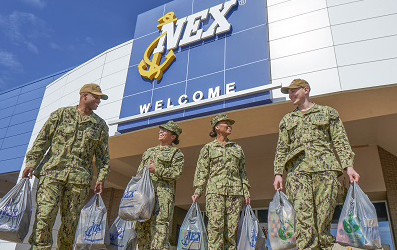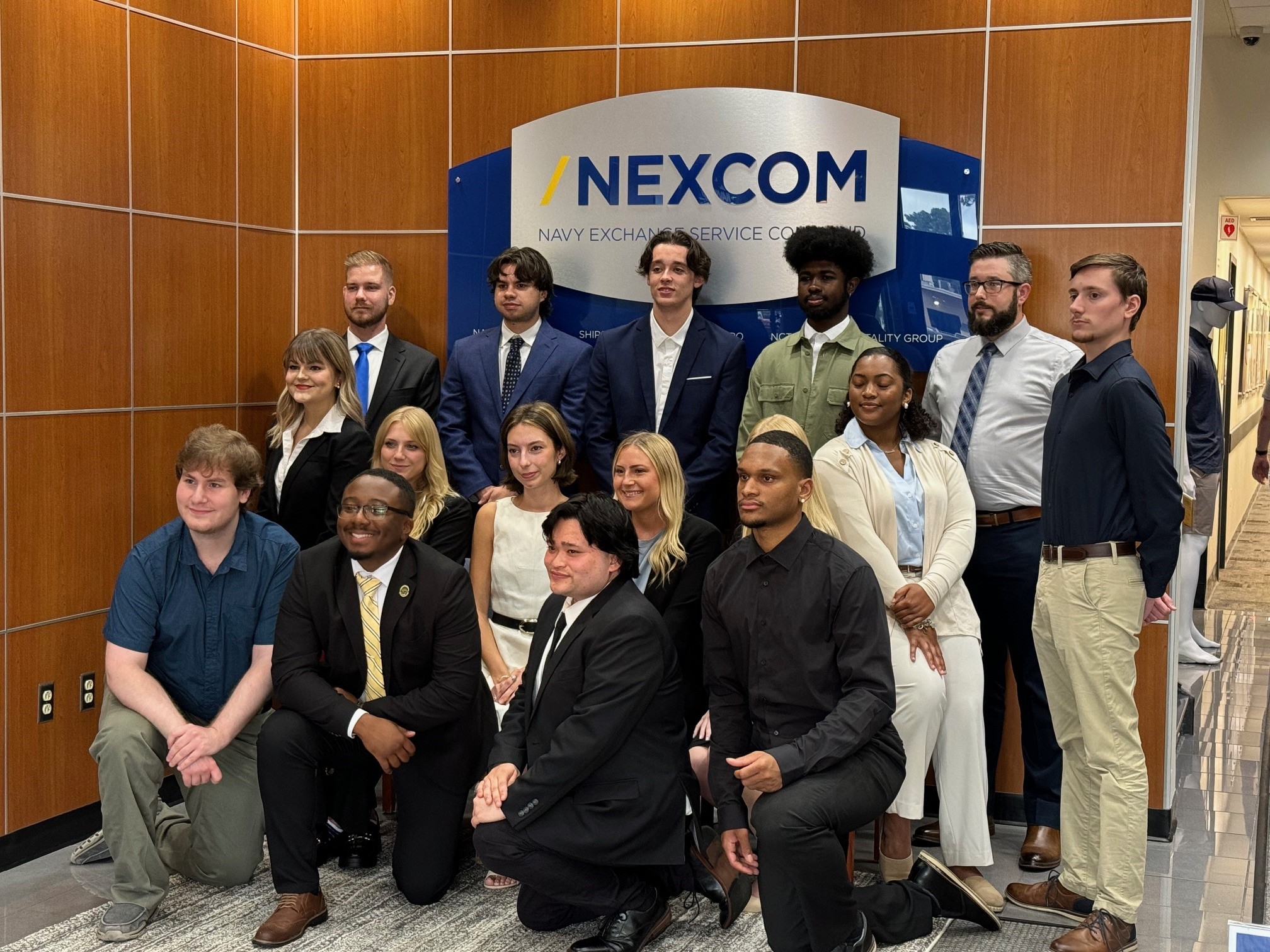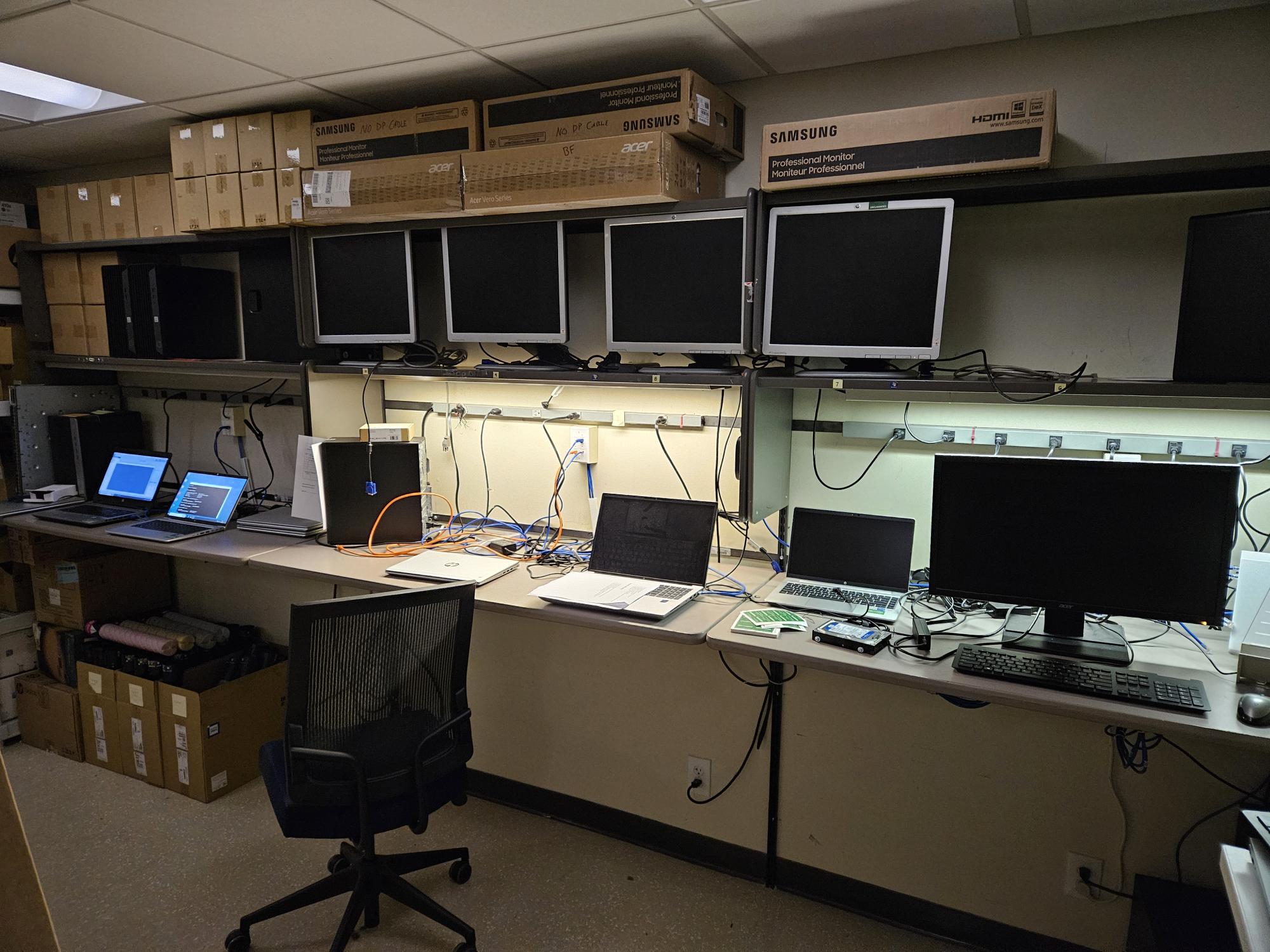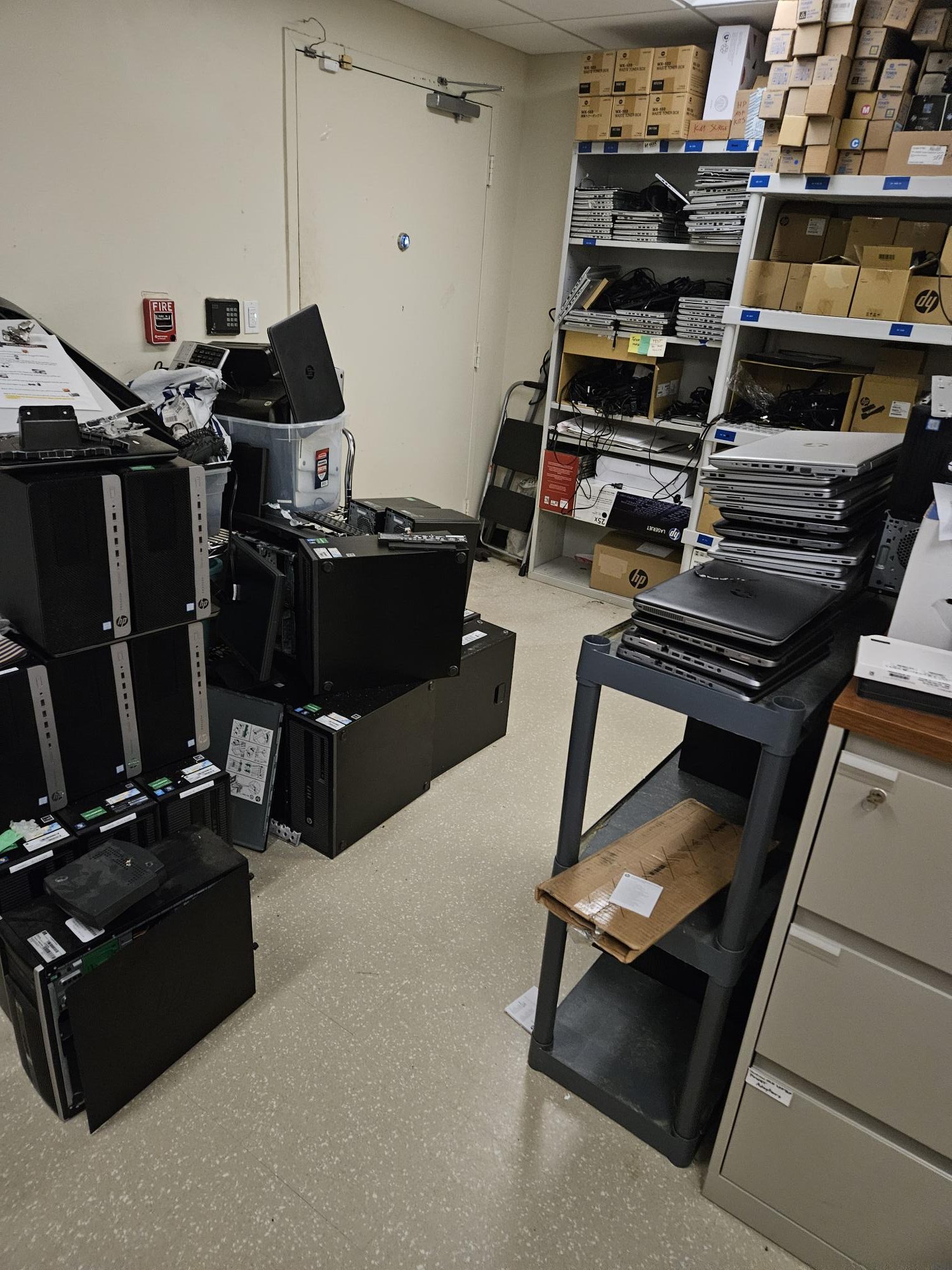Introduction
There is a level of honesty that I will apply to the question of why decided to do an internship with this company. The first statement I have, is it was the only company to call me back post interview with an offer to join their company as an intern. The second statement I have, is that I have a background with this company. I am a retired Navy Chief, I was and still am their targeted demographic. They are providing a service to military service members and their dependents, and it is that service that calls to me. I’ve always been called to serve, that is why I joined the United States Navy, and it is why I’ve done so much community service. When I retired, I lost that aspect of service, I lost myself. So I decided for my second career that I would choose a field that I could continue to serve and it was somewhere there was a need. I chose the Cybersecurity field as my second career, as I see the damage it can cause and my service would be to help defend against threats in that area. The Navy Exchange Service Command (NEXCOM) Internship was a chance and a step in that chosen second career path, where I could at least temporarily work at a company that at its core was about service.
As far as what specifically I hoped to learn was harder to narrow down. As it was my first experience in the corporate world, I hoped to have positive exposure to that world. NEXCOM is a great place to get that exposure, as it is a soft introduction from military life to corporate life. They are corporate, but they are closely aligned with the Navy, so much so that they actually have some staff that are Active Duty Navy. I hoped to gain some hands on experience with working computer problems within an enterprise. I can only come across so many issues on my own single computer, and none of them related to an enterprise. So to work in an environment where I can put my hands on literally hundreds of devices all working on the same network, with a myriad of issues, sometimes it is like working on a puzzle. The third thing I hope to learn was some experience working with customers. Customer service is its own type of service when it comes to working in a PC-Lab, as the customers are your fellow employees with-in the company, and you successfully solving their computer problems enables them to make the company be successful.
I hope the rest of this paper helps to highlight the reasons I chose service, why I chose this company to internship and reflects that I learned from the objectives I laid out.
Company – NEXCOM
History
The Navy Exchange Service Command (NEXCOM), originally coined as the Navy Ship’s Stores Office, was established in Brooklyn, N.Y., on Apr. 1, 1946, and eventually renamed and relocated to Norfolk, VA in 1993. In the 1800 sailors originally relied on bumboats, small vessels exchanging merchandise for money via pails, to get their personal items they needed. These good sold by the bumboats were typically inferior and very high priced products. As an alternative, Navy ships would operate canteens, “slop chests,” keeping the money spent by the crew on the ship. This allowed them to improve the quality of the food onboard the ship. In 1896 aboard USS Indiana the first canteen was opened, selling only beer. Soon after that other ships canteens started carrying tobacco and other items, the profits going toward welfare and recreation purposes on each ship.
The Naval Appropriation Act of 1909 established the first official resale entities, “Ship’s Stores” and “Commissary Stores.” This allowed the Navy to procure and sell merchandise to Navy and Marine Corps at profit, as long as profit did not exceed 15 percent. By 1942 it became obvious that there was no need nor space for two types of stores aboard ships, so by recommendation the Secretary of the Navy merged all the stores and made it mandatory to have a Supply Officer at all naval commands. After which via recommendation of the committee lead by Capt. Wheelock H. Bingham, the Ships Service Stores ashore, were to be operated like normal retail stores, operated with non-appropriated funds and managed by civilians. After those actions the “Ships Store Afloat” and the “Navy Exchange” were born. [1]
Mission
NEXCOM’s mission is to provide authorized customers with quality goods and services at a savings and to support Navy quality of life programs for active duty military, retirees, reservists, veterans, Department of Defense (DoD) civilians and families. It oversees several business lines including Navy Exchange retail stores, Navy Lodge, and Navy Gateway Inns & Suites. The organization operates through non-appropriated funds except for the Ships Store Program, reinvesting earnings into Navy programs, facilities, and equipment. NEXCOM operates under a Navy chain of command, led by a civilian CEO, Chief of Staff, and military personnel. It adheres to Congressional oversight and DoD regulations governing military exchanges, operating as a field activity under NAVSUP to support Navy readiness worldwide. [2]
Major Products and Services
NEXCOM oversees seven primary business lines: Navy Exchange (NEX) retail stores and services; Navy Lodge Program; Navy Gateway Inns & Suites; Ships Store Program; Uniform Program Management Office; Navy Clothing Textile and Research Facility; and Telecommunications Program Office. [2] The Navy Exchange Service Command (NEXCOM) is headquarters for the worldwide NEXCOM Enterprise.
Navy Exchange Retail Store
NEXCOM’s Navy Exchange (NEX) stores aim to provide quality goods and services at a savings while supporting Navy quality of life programs. As mentioned before they serve active duty personnel, retirees, veterans, DoD civilians, and their families globally. With approximately 100 complexes and over 300 stores on Navy installations worldwide, NEX offers competitive prices and savings exceeding 20% on average. Beyond retail, NEX stores provide essential services such as barber shops, automotive centers, gas stations, and food outlets. All profits, totaling over $3.7 billion since inception, are reinvested to benefit Navy Morale, Welfare, and Recreation programs.

Navy Lodge Program
Navy Lodges are a hotel service that provide spacious guest rooms and family suites equipped with amenities such as vending machines, guest laundry, fitness rooms, and children’s play areas. They offer free Wi-Fi and breakfast, ensuring accessibility for all guests. Most Navy Lodges also accommodate family pets weighing up to 70 pounds. Priority for reservations is given to relocating families, but active duty personnel, reservists, retirees, veterans, DoD personnel on official travel, official guests, and NEXCOM associates are eligible to stay at Navy Lodges.

Navy Gateway Inns & Suites
Similar to the Navy Lodge, NGIS (Navy Gateway Inns & Suites) is a DoD Lodging Program designed to support mission readiness by providing quality lodging and services to a mobile military community. Operating at 60 Navy installations globally, NGIS offers over 17,000 rooms tailored for Official Temporary Duty (TDY) travelers, prioritizing their accommodation needs. NGIS ensures comfortable stays with affordable room rates for individual and group TDY travelers, PCS travelers, DoD civilians, retirees, reservists, and sponsored guests alike.
Ships Store Program
NEXCOM’s Ships Store Program’s mission is to provide quality goods and essential services at savings, unlike the bumboats of old, support afloat recreation needs, and promote morale among sailors. Onboard U.S. Navy ships, ships stores are managed by active duty Navy Supply Corps Officers and Retail Services Specialists. They offer a range of necessities including food, beverages, health & beauty aids, electronics, and uniform items. These stores also provide crew services such as vending, barber shops, and laundry. Profits from sales contribute to the ship’s Morale, Welfare, and Recreation (MWR) program. Ashore, Ships Stores in remote locations like Diego Garcia and islands off California are managed similarly, supporting local MWR programs and enhancing Navy quality of life.
Uniform Program Management Office
The Uniform Program Management Office (UPMO) oversees the Navy Uniform Program, focusing on policy recommendations, product improvement, design, and distribution. UPMO ensures uniform availability and strives for superior fit, comfort, safety, and durability to achieve high customer satisfaction. It coordinates with various stakeholders including the Navy Supply Systems Command, Uniform Matters Office, and others to manage uniform policies and standards. Additionally, UPMO supervises all uniform items sold at NEXs worldwide, encompassing uniforms, insignia, headwear, footwear, and accessories for U.S. Navy and Marine Corps personnel. NEXs offer multiple ways to purchase uniforms, including on-base Uniform Support Centers staffed with knowledgeable personnel and seamstresses, toll-free phone orders, and online purchasing options with embroidery services available.
Navy Clothing & Textile Research Facility
The Navy Clothing and Textile Research Facility (NCTRF) in Natick, Massachusetts, plays a crucial role in the development and testing of uniforms and protective clothing for Navy Sailors. Its mission includes testing fabrics for fire resistance, water immersion, heat and cold stress, ballistic protection, and overall uniform design and development. NCTRF employs a team of textile technologists, clothing designers, physiologists, and other experts to conduct research, design improvements, and assess user feedback on protective garments. The facility ensures that uniform items meet or exceed Navy standards through rigorous testing, including wear and fit tests, sizing system development, and continuous quality assurance programs. NCTRF focuses on enhancing uniform styling, fit, durability, and materials to optimize performance in the demanding Navy shipboard environment.
Telecommunications Program Office
NEXCOM’s Telecommunications Program Office (TPO) manages unofficial personal telecommunications for the Navy community, ensuring affordable and reliable connectivity from boot camp to retirement. TPO oversees contracts with vendors to provide services such as Wi-Fi in NEX locations, Navy hospitals, MWR facilities, and lodging like Navy Lodges and NGIS worldwide. They support phone services in various settings including brigs and Recruit Training Command Great Lakes. TPO also offers cell phone sales and service through NEX Connect kiosks globally, and enhances telecommunications capabilities at specific naval installations like Naval Station Guam and Guantanamo Bay. [3]
Operations
NEXCOM has an established Navy chain of command that oversees and provides direction throughout the enterprise. It conducts its operations through federal non-appropriated funding. As such, NEXCOM is self-supporting with all profits earned reinvested into Navy quality of life programs as well as NEXCOM buildings and equipment. The headquarters in Virginia Beach, VA, houses a civilian Chief Executive Officer and Chief of Staff, along with an active duty Deputy Commander for Military Services, Deputy Commander Uniform Programs and a Command Master Chief. Unlike civilian retailers, NEXCOM is subject to Congressional oversight from the House Armed Services Total Force Subcommittee. There are several laws in effect that govern how military exchanges may operate in certain businesses or with certain types of merchandise. DoD instruction 1330.21 “Armed Services Exchange Regulations” (ASER) outlines procedures and guidelines for operating Armed Services Exchange. [2] This unique mixture of civilian, military and funding allows NEXCOM to perform its mission for the Navy.
Orientation
The first day at NEXCOM, well first half of the day, was for orientation. Orientation for myself was a boring sort of event, I have a familiarity and background associated with the Navy Exchange, as I am a retired Navy Chief Petty Officer. Also I am nearly 40 years old in a room surrounded by 16 other interns, except they are all in their early 20’s, which makes it hard for me to connect with them. There was a whole team from HR giving us our initial training, and helping us fill out our initial paperwork and verifying our documents for identity and work purposes. Training was the basic company policies, dress code, harassment, company history and scope of what the company does. We did have a visit from the CEO, Robert Bianchi, USN Adm (ret.), he welcomed us, and gave us his mission, vision and guiding principles. After all that wrapped up us interns were supposed to be picked up by their managers and toured around and taken to their workspaces. Apparently that meant everyone but me, as I was to find out, my manager worked 100% remote.

Management and Supervision
The NEXCOM Enterprise is organized into “codes” or departments and each department is further broken down into areas of responsibility each with its own manager. I work in “Code-I” which is led by a Senior Vice-President (SVP), under that umbrella is multiple areas of responsibility, like Data Center, Telecommunications, Network, Client Services Support Center Help Desk and PC-Lab, each with its own manager as mentioned before. I work within the PC-Lab, which consists of a lead technician and five other technician, the manager of which works 100% remote. My only interaction with this manager has been via phone call or Microsoft Teams a handful of times. However on the Intern side of things there is an overall “Intern Lead” from HR-Training. So any issues I have had that I needed to communicate in person, I have taken to her.
Duties
My duties in the PC-Lab, some have been spelled out specifically by the manager, but others are more nuanced and specific outside of those. The ones defined by the manager are as follows; Service Desk Manager – Learn how to appropriately create, document/ update progress, update status, convert and close Incidents and Change Orders. Printers – Identify source of printer failure and complete minor repairs including removing paper jams. Lifecycle – Imaging computers, install applications, install printers, backup and restore end user profiles. Customer Service – Interface with end users being supported in day-to-day support role providing resolutions to end users reported problems. Those are pretty broad and do not really describe in detail the nitty gritty the actions I perform.


Yes, I lifecycle old computers for new, I have Imaged over 140 new laptop computers for use. Imaging involves setting initial BIOS setting and then running an initial boot script from the network and a deployment script after that. These scripts basically clone all laptops with all the basic software and settings to operate on the same enterprise network. The old laptops that have been replaced, get taken apart, their RAM and SSDs removed for reuse, and HDD removed for destruction. All those services are also performed on PCs, but there currently is not an inventory of new ones to perform lifecycles with.
As far as user reported problems and performing customer service, a majority of those issues are self-induced user errors. These get to be slightly frustrating, because some of the users act entitled or claim they possess knowledge they do not. However there are those users who are fairly humble, and come to the PC-Lab and express their lack of knowledge or ineptitude with technology. Those are my favorite users, one because I can build them up, two everything I do seems like magic to them, and three they are actually grateful. This is not to show that I am jaded or poor at customer service, quite the opposite. I even received a “Bravo Zulu,” praise from the CEO to my Code’s SVP, expressing how great his interaction was with me fixing his computer issues. The rest of the issues that occur, is like trying to solve a puzzle, sometime the issue is common and has a simple solution, and sometimes it is more involved. Solving those more involved puzzles make for a gratifying experience.
I’ve not had a lot to do with printers, added a few with a script to user’s profiles, and replaced a few toner and waste toner cartridges. And with all that above, documented the problems or actions taken via the trouble ticket system, Service Desk Manager.
Skills and ODU
There was not a lot of cybersecurity specific skills or knowledge that I used in this internship. However it did get me more hands on with laptops and experience with an enterprise. As far as ODU curriculum connections that I have been able to make, there is of course some basic computer hardware knowledge that was useful, but also scripting with various programing languages was helpful for navigating the scripts used here in PowerShell and navigating Command Prompt. I’ve gotten to have more hands on experience troubleshooting laptops, of which I had basically zero experience. I feel as if I am ready for my CompTIA A+ certification.
Outcomes
For the learning objectives I hoped to achieve, I believe I was overall successful. I needed experience in the corporate world, as that is where I will end up. NEXCOM is a great bridge and soft introduction, from military to corporate life, as there is that military presence and command structure, and the mission to support the Navy as it does. I definitely got some customer service experience, between the Service Desk Manager and all the users that needed laptops life cycled or had issues with their hardware, I interacted with a great many employees at NEXCOM. I also got hands on experience with an Enterprise and its assets. I’ve handled and worked on so many computers, with so many issues, whether it was imaging, replacing batteries, replacing uni-body keyboards, replacing screens, bios issues or any number of other issues, I certainly got that experience I was looking for.
Internship
Some of the most exciting aspects of the internship was all the facility tours they scheduled for the group of interns. They didn’t just send us to our workspaces and leave us there, they took us to almost every aspect of the NEXCOM Enterprise and show how it all worked together. From headquarters, to the warehouse, to the retail stores and the lodging, all in concert for the benefit of the service members. On top of that, the internship program at NEXCOM focuses strongly on professional development. We had various trainings on communication, personality, 7 Habits of Highly Effective People, LinkedIn, interviews, resumes and more. I guess the most discouraging aspect of the internship for me, was that it was not directly working in the Cyber Security field. However I did not let that hold me back, in my spare time at work, I worked on teaching myself course work related to Certified Ethical Hacking. The most challenging aspect of the internship, is how to fit working full time into my life again. I have been a full time student and a stay at home dad for the past three years, so balancing those roles and doing the internship took a lot of my time a dedication to manage it all. My recommendations for future interns in this internship, is be prepared to work at a company that is more about service than it is about profit margins. The company as a whole is more worried about providing a positive experience and enhancing morale, recreation and welfare of the Sailors in the United States Navy. So while profit is not the forefront goal, it is still important to carry out that mission.
Conclusion
For an internship program, I am unable to recommend NEXCOM enough as the best choice. From my understanding not every internship takes the time and effort to invest in their interns as they are often temporary employees at best. It was definitely a worthy experience and a great introduction to the corporate world. My experience here will has opened my eyes to my future as I complete my last year of undergraduate studies at Old Dominion University. I will be hunting for a position at a company that carries similar values about their employees as NEXCOM has shown me is possible. And in the future when I start my own Cyber Security Firm, I will make sure my companies intern program invests in the Interns regardless of their transient status.
References
[1] – History of NEXCOM: Shop Your Navy Exchange – Official Site. Navy Exchange. https://www.mynavyexchange.com/nex/enterprise-info/our-history
[2] – Who We Are: Shop Your Navy Exchange – Official Site. Navy Exchange. https://www.mynavyexchange.com/nex/enterprise-info/who-we-are
[3] – Our Seven Business Lines: Shop Your Navy Exchange – Official Site. Navy Exchange. https://www.mynavyexchange.com/nex/enterprise-info/our-seven-business-lines



July 19, 2024 at 10:37 pm
Excellent final paper Kevin.